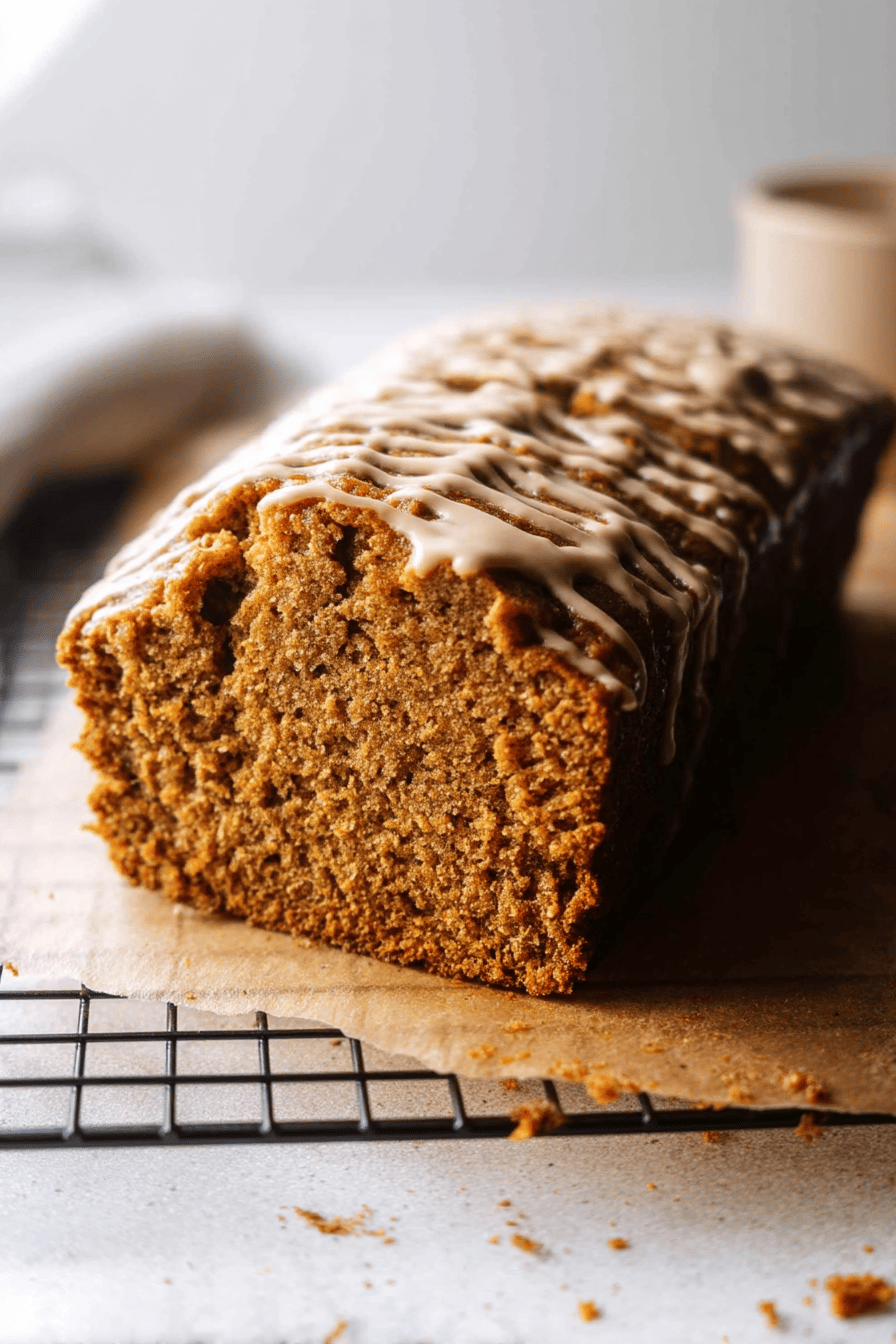Benefits and Advantages of pumpkin bread
Pumpkin bread is a beloved baked good known for its simplicity and flavorful appeal. Its ease of preparation makes it accessible to both beginner and experienced bakers, requiring straightforward mixing techniques and common pantry ingredients. Nutritionally, pumpkin bread provides valuable benefits by incorporating nutrient-rich pumpkin puree, which contains vitamins A and C, antioxidants, and dietary fiber. These nutrients support immune function and digestive health.
The natural moisture from pumpkin puree creates a tender, soft crumb without needing excessive fats, making pumpkin bread a lighter alternative to traditional sweet breads. The warm spices like cinnamon, nutmeg, and cloves add cozy flavors that are perfect for all seasons. Moreover, this versatile bread adapts well to dietary modifications, with options for vegan, gluten-free, or low-calorie versions, accommodating a wide range of preferences and needs. The comforting taste and health benefits combine to make pumpkin bread an excellent choice for a wholesome, delicious treat any time of the year.
Essential Ingredients for pumpkin bread
For a classic pumpkin bread with balanced flavor and texture, the key ingredients include:
- 2 cups (about 250 g) all-purpose flour, spooned and leveled
- ½ teaspoon salt
- 1 teaspoon baking soda
- ½ teaspoon baking powder
- 1 teaspoon ground cloves
- 1 teaspoon ground cinnamon
- 1 teaspoon ground nutmeg
- 1 can (15 oz / 425 g) 100% pure pumpkin puree (not pumpkin pie filling)
- 1½ sticks (¾ cup / 170 g) unsalted butter, softened (or ½ cup / 120 ml vegetable oil for moister texture)
- 2 cups (400 g) granulated sugar (can include brown sugar for added depth, e.g., 1 cup brown sugar + 1 cup granulated)
- 2 large eggs, room temperature
Optionally, semi-sweet chocolate chips or chopped nuts like walnuts or pecans (around 2/3 cup or 110 g) can be added for extra texture and flavor.
Using unsalted butter or oil ensures controlled fat content, and the combination of warm spices enriches the bread’s aroma. This ingredient mix strikes a balance of moisture, sweetness, and flavor unique to pumpkin bread.
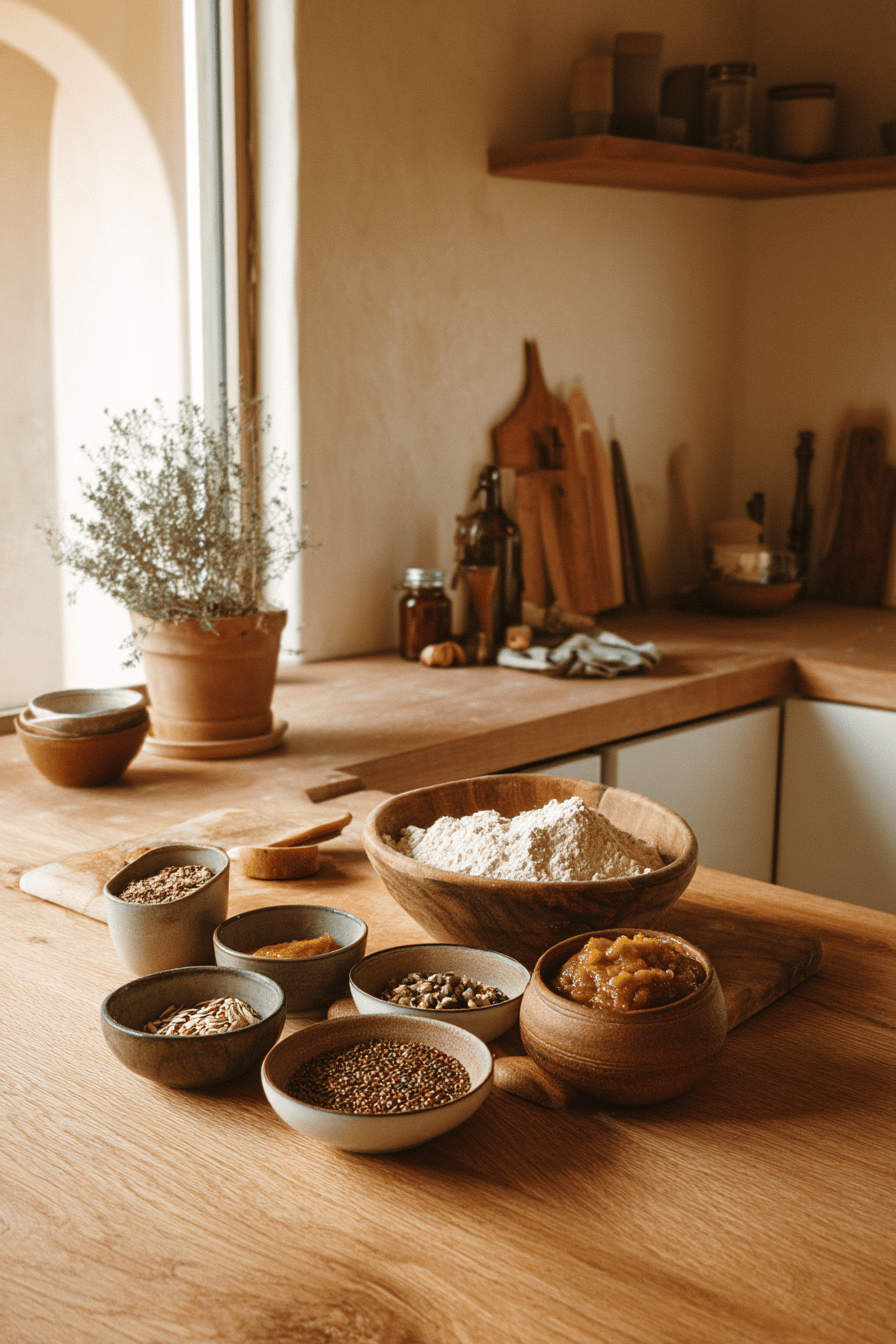
Dietary Substitutions to Customize Your pumpkin bread
Adapting pumpkin bread to meet dietary needs or ingredient substitutions is straightforward and preserves its delicious quality:
- Vegan: Replace eggs with flax eggs (1 tablespoon ground flaxseed mixed with 3 tablespoons water per egg) and use plant-based butter or vegetable oil. Ensure pumpkin puree is unsweetened and plant-based sugar alternatives are used.
- Gluten-Free: Use a gluten-free flour blend formulated for baking with a binder like xanthan gum to maintain texture and rise. Adjust baking time slightly as these flours behave differently.
- Low-Fat: Substitute oil or butter with unsweetened applesauce to reduce fat while keeping moisture. This can slightly change the crumb’s density.
- Low-Sugar: Replace granulated and brown sugar with natural sweeteners like stevia, erythritol, or maple syrup, adjusting liquid quantities as necessary.
- Nut-Free: Omit nuts and avoid cross-contamination; consider seeds like pumpkin or sunflower seeds as alternatives for crunch.
These substitutions make pumpkin bread accessible for various dietary preferences without compromising its rich flavor and moist texture.
How to Prepare the Perfect pumpkin bread: Step-by-Step Guide
Step 1: Preheat Oven and Prepare Pans
Preheat your oven to 325°F (160°C). Position the rack in the center. Grease two 8×4-inch loaf pans with butter and dust with flour, or use a non-stick baking spray that contains flour to prevent sticking.
Step 2: Whisk Dry Ingredients
In a medium bowl, whisk together the all-purpose flour, salt, baking soda, baking powder, ground cloves, cinnamon, and nutmeg. Set aside.
Step 3: Cream Butter and Sugar
In a large bowl or using an electric mixer with a paddle attachment, beat the softened butter and sugar together on medium speed until just blended. This step incorporates air for a lighter bread texture.
Step 4: Add Eggs
Add eggs one at a time, beating well after each addition. Continue beating until the mixture becomes light and fluffy.
Step 5: Incorporate Pumpkin Puree
Mix in the pumpkin puree until fully integrated. The batter may look grainy or slightly curdled, which is normal.
Step 6: Combine Wet and Dry Ingredients
Gradually add the dry ingredients to the wet mixture on low speed. Mix just until combined; do not overmix to retain tenderness. If using, gently fold in chocolate chips or nuts now.
Step 7: Pour Batter and Bake
Divide the batter evenly between the prepared loaf pans and smooth the tops. Bake for 65 to 75 minutes, or until a toothpick or cake tester inserted into the center comes out clean or with a few moist crumbs. To prevent over-browning, cover the loaves with foil halfway through baking if needed.
Step 8: Cool
Allow pumpkin bread to cool in the pans for 10 minutes, then transfer to a wire rack to cool completely before slicing. Cooling properly helps set the crumb and prevents crumbling.
“Following this careful process results in moist, flavorful pumpkin bread with a tender crumb and inviting spice aroma.”
For another fall favorite, try our Gooey Caramel Apple Muffins that pair wonderfully with pumpkin bread for a cozy snack.
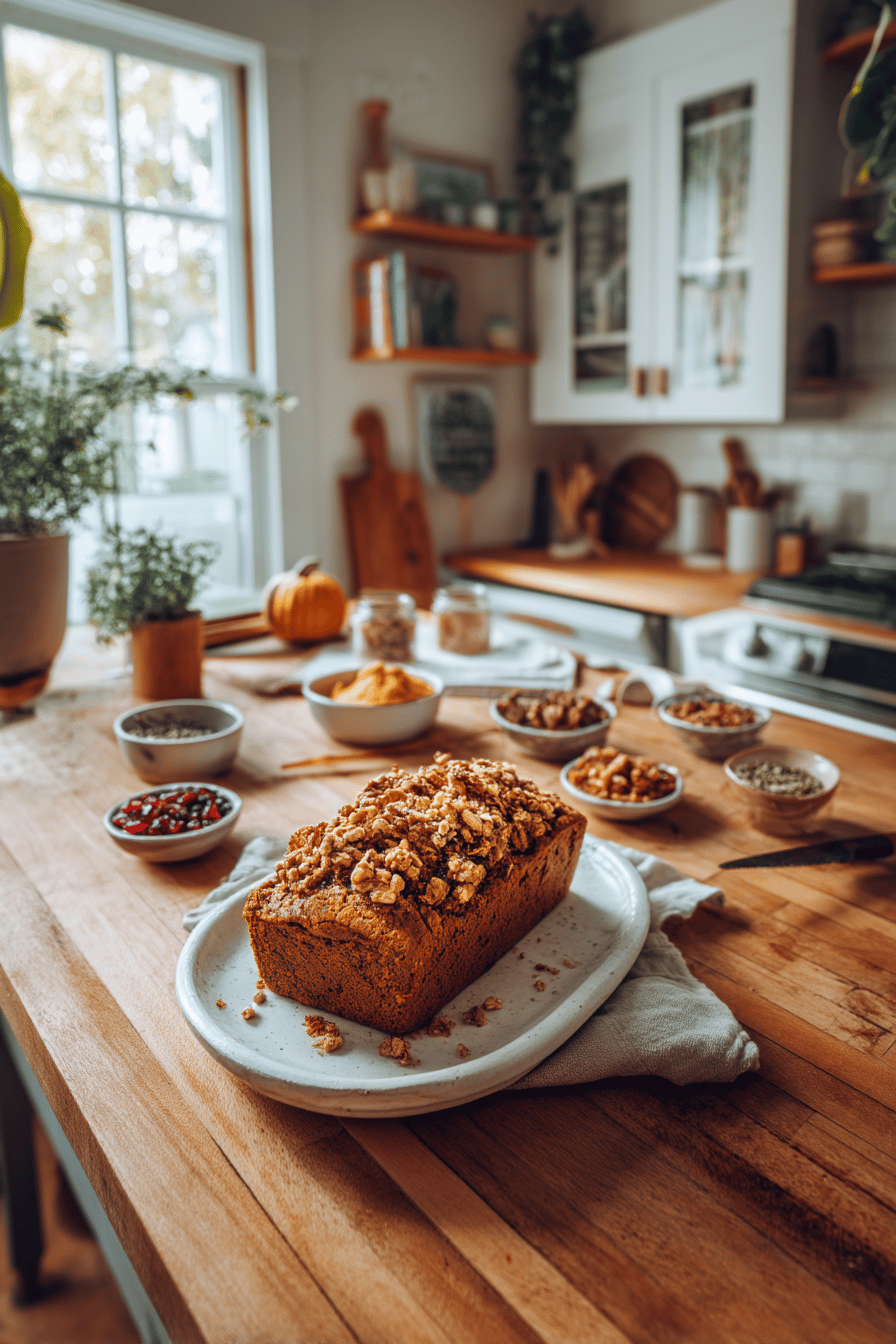
Advanced Tips and Variations
To bake the best pumpkin bread, start by making sure all ingredients are at room temperature for easier mixing and a consistent texture. Toasting whole spices such as cinnamon, nutmeg, or cloves before grinding and adding them to your batter can deepen the flavor, giving your bread a warm, aromatic boost.
Add exciting mix-ins like semi-sweet chocolate chips, chopped walnuts, pecans, or dried cranberries to add texture and flavor complexity. For extra richness, consider substituting part of the vegetable oil with melted butter or coconut oil, which can deepen the mouthfeel and flavor nuances.
Using freshly made pumpkin puree results in brighter, fresher flavors; however, canned pumpkin puree offers convenience and consistent moisture. Boost the protein content by folding in protein powder or nut butters adjust the liquids slightly for balance.
For an extra-special touch, topping the loaf with a streusel made of brown sugar and oats before baking adds a pleasant crunchy topping and visual appeal.
Gluten-free bakers can add xanthan gum to improve dough elasticity and crumb structure, helping the bread retain moisture and shape. These tips allow you to tailor pumpkin bread to your taste preferences and dietary needs without compromising on moistness or flavor.
How to Store pumpkin bread: Best Practices
Proper storage is essential to maintain the moistness and flavor of pumpkin bread. Allow your bread to cool fully at room temperature to prevent condensation build-up, which can cause sogginess.
- Short-term storage: Wrap the bread tightly in plastic wrap or place it in an airtight container at room temperature for up to three days.
- Extended storage: Refrigerate the wrapped bread for up to one week; this slightly prolongs freshness and prevents spoilage.
- Long-term storage: Freeze the fully cooled loaf or individual slices by wrapping them securely with plastic wrap and aluminum foil or placing them in freezer-safe bags. Pumpkin bread freezes well for up to three months.
To enjoy frozen bread, thaw it overnight in the refrigerator, then warm slices gently in a toaster oven or microwave to restore softness and aroma. Avoid leaving stored bread at room temperature for excessive time to prevent drying out or mold growth.
Nutritional Value of pumpkin bread
The typical slice of pumpkin bread contains approximately the following nutrients:
| Nutrient | Amount per Slice |
|---|---|
| Calories | 150 – 200 kcal |
| Fat | 3 – 5 g |
| Protein | 2 – 3 g |
| Carbohydrates | 25 – 30 g |
| Dietary Fiber | 2 – 4 g |
| Sugar | Varies (typically 15-20 g) |
| Vitamins (A and C) | Supports immune and skin health |
| Minerals (Potassium, Magnesium) | Present in moderate amounts |
Pumpkin bread is rich in vitamins A and C owing to the pumpkin puree, which helps support immune function and skin health. The dietary fiber contributes to digestive health and promotes satiety. Those seeking to reduce calories or sugar can make substitutions like applesauce for oil and natural sweeteners. Including nuts or protein powders can increase protein content, making the bread more nutritious overall.
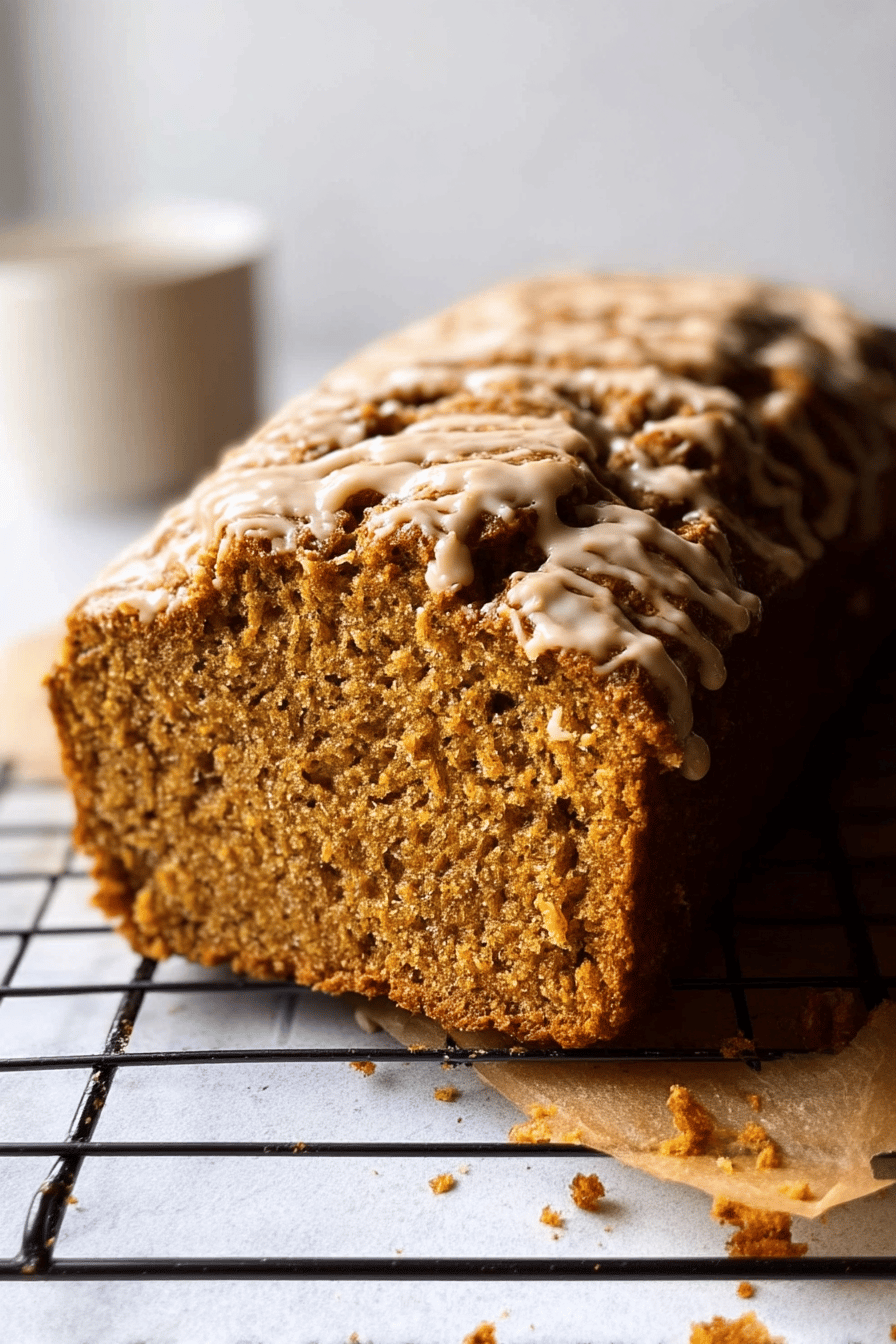
FAQs: Frequently Asked Questions About pumpkin bread
How can I tell when pumpkin bread is fully baked?
Pumpkin bread is done when it has risen to form a rounded dome and a toothpick inserted into the center comes out with a few moist crumbs but no raw batter. The edges should be golden brown while the center remains slightly lighter. If the toothpick shows wet batter, continue baking and test again every 5 minutes to avoid over- or under-baking.
What is the best way to keep pumpkin bread moist after baking?
To maintain moisture, store pumpkin bread wrapped in aluminum foil if whole, or in an airtight container once sliced. Refrigerate it for up to 10 days. Reheat slices in the microwave for about 15 seconds before serving. The vegetable oil and pumpkin puree in the recipe naturally help the bread stay soft and moist during storage.
Can I use gluten-free flour to make pumpkin bread?
While this recipe hasn’t been tested with gluten-free flours, some bakers have successfully used 1-to-1 gluten-free blends like Cup4Cup without adjusting other ingredients. If you try a gluten-free version, keep an eye on the texture and baking time, as these flours can behave differently than wheat flour.
What’s the difference between using oil and butter in pumpkin bread recipes?
Using oil in pumpkin bread keeps the crumb light and moist, which is especially important in recipes with pumpkin puree. Butter, on the other hand, tends to make breads denser and adds a buttery flavor that might work better in banana bread but can weigh down pumpkin bread’s texture.
Is it okay to substitute milk for orange juice in pumpkin bread recipes?
Yes, milk can be used as a substitute for orange juice with no significant change in texture or baking time. Orange juice adds a subtle citrus note, but milk provides moisture and richness, making it a suitable alternative if you prefer a milder flavor or have no orange juice on hand.
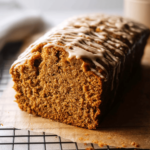
Pumpkin Bread Made Easy: Moist Homemade Recipe with Classic New England Flavor
- Total Time: 1 hour 55 minutes
- Yield: 2 loaves 1x
- Diet: Vegetarian
Description
🎃 Experience the rich, moist texture of this Pumpkin Bread with a classic New England flavor that’s perfect for cozy fall days.
🍞 Enjoy how easy it is to make this delightful homemade treat, perfect for breakfast or as a comforting afternoon snack.
Ingredients
2 cups (about 250 g) all-purpose flour, spooned and leveled
½ teaspoon salt
1 teaspoon baking soda
½ teaspoon baking powder
1 teaspoon ground cloves
1 teaspoon ground cinnamon
1 teaspoon ground nutmeg
1 can (15 oz / 425 g) 100% pure pumpkin puree
1½ sticks (¾ cup / 170 g) unsalted butter, softened (or ½ cup / 120 ml vegetable oil)
2 cups (400 g) granulated sugar (or 1 cup brown sugar + 1 cup granulated sugar)
2 large eggs, at room temperature
Optional: 2/3 cup (about 110 g) semi-sweet chocolate chips or chopped nuts like walnuts or pecans
Instructions
1. Preheat oven to 325°F (160°C). Grease two 8×4-inch loaf pans with butter and dust with flour or use non-stick baking spray with flour.
2. In a medium bowl, whisk together the flour, salt, baking soda, baking powder, cloves, cinnamon, and nutmeg. Set aside.
3. In a large bowl or using an electric mixer, beat the softened butter and sugar together on medium speed until just blended.
4. Add eggs one at a time, beating well after each addition until the mixture becomes light and fluffy.
5. Beat in the pumpkin puree. The batter may appear grainy or slightly curdled, which is normal.
6. Gradually add the dry ingredients and mix on low speed just until combined. Do not overmix. Fold in optional chocolate chips or nuts, if using.
7. Divide the batter evenly into the prepared loaf pans and spread evenly.
8. Bake for 65 to 75 minutes, or until a toothpick or cake tester inserted in the center comes out clean or with a few moist crumbs. Cover with foil halfway through baking to prevent over-browning if needed.
9. Let the bread cool in the pans for 10 minutes, then transfer loaves to a wire rack to cool completely before slicing.
Notes
💡 Using vegetable or canola oil instead of butter can enhance moisture and lighten the crumb.
🍊 Adding ¼ cup orange juice or milk can prevent the bread from being too dense and add subtle tang or richness.
🚀 The bread tastes even better on the second day as the flavors develop.
- Prep Time: 25 minutes
- Cooling time: 20 minutes
- Cook Time: 70 minutes
- Category: Bread
- Method: Baking
- Cuisine: American
Nutrition
- Serving Size: 1 slice
- Calories: 166
- Sugar: 17g
- Sodium: 117mg
- Fat: 6g
- Saturated Fat: 4g
- Unsaturated Fat: 0g
- Trans Fat: 0g
- Carbohydrates: 26g
- Fiber: 1g
- Protein: 2g
- Cholesterol: 31mg
Keywords: Pumpkin, Bread, Moist, Easy

